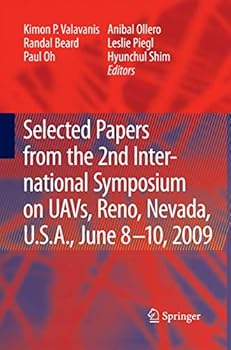Selected Papers from the 2nd International Symposium on Uavs, Reno, U.S.A. June 8-10, 2009
Select Format
Select Condition 
Book Overview
In the last decade, signi?cant changes have occurred in the ?eld of vehicle motion planning, and for UAVs in particular. UAV motion planning is especially dif?cult due to several complexities not considered by earlier planning strategies: the - creased importance of differential constraints, atmospheric turbulence which makes it impossible to follow a pre-computed plan precisely, uncertainty in the vehicle state, and limited knowledge about the environment due to limited sensor capabilities. These differences have motivated the increased use of feedback and other control engineering techniques for motion planning. The lack of exact algorithms for these problems and dif?culty inherent in characterizing approximation algorithms makes it impractical to determine algorithm time complexity, completeness, and even soundness. This gap has not yet been addressed by statistical characterization of experimental performance of algorithms and benchmarking. Because of this overall lack of knowledge, it is dif?cult to design a guidance system, let alone choose the algorithm. Throughout this paper we keep in mind some of the general characteristics and requirements pertaining to UAVs. A UAV is typically modeled as having velocity and acceleration constraints (and potentially the higher-order differential constraints associated with the equations of motion), and the objective is to guide the vehicle towards a goal through an obstacle ?eld. A UAV guidance problem is typically characterized by a three-dimensional problem space, limited information about the environment, on-board sensors with limited range, speed and acceleration constraints, and uncertainty in vehicle state and sensor data.
Format:Paperback
Language:English
ISBN:9400791585
ISBN13:9789400791589
Release Date:November 2014
Publisher:Springer
Length:529 Pages
Weight:1.64 lbs.
Dimensions:1.1" x 6.1" x 9.2"
Related Subjects
Engineering Science Science & Math Science & Scientists Science & Technology TechnologyCustomer Reviews
0 rating





